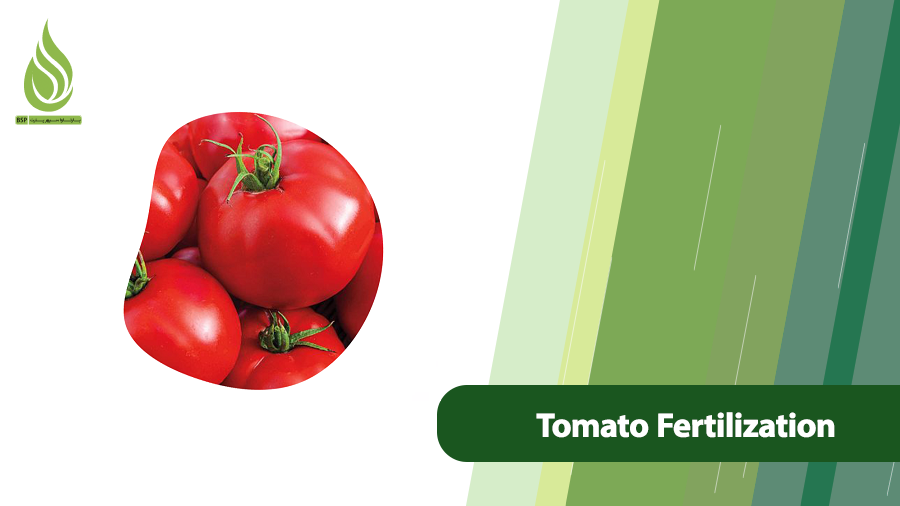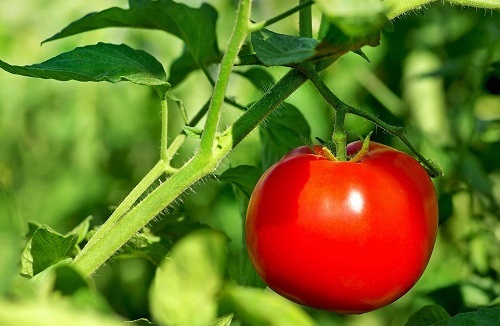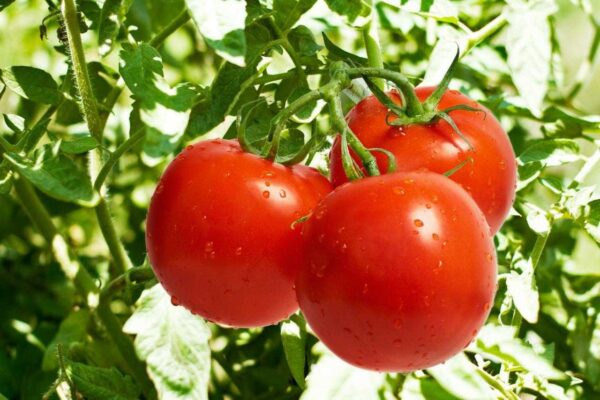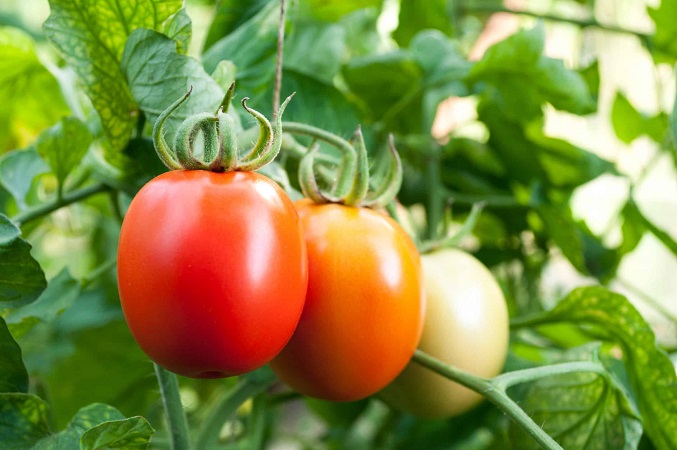
Tomato Fertilization: Key Tips for Boosting Yield and Flavor
Tomatoes are one of the world’s most popular vegetables, prized for their delicious taste and abundant nutritional benefits, and are used in many dishes and salads. To produce high‑quality, bountiful crops, proper fertilization is crucial. Correct fertilization of tomato plants can improve flavor, size, productivity, market appeal, and overall plant performance. In this article, we’ll cover the key points of fertilizing tomatoes and explain the optimal fertilization schedule. Let’s get started.
Why Proper Fertilization Matters for Tomato Plants
To harvest top‑quality tomatoes, you must feed the plants throughout their growth stages. Thoughtful nutrition offers several important benefits:
- Fertilizers can enhance the taste, color, and texture of tomatoes.
- Correct fertilization strengthens the tomato plant’s resistance to diseases and pests.
- Proper feeding promotes better branching in tomato plants.
- Adequate fertilization increases flowering and boosts fruit set.
- Appropriate nutrition supports faster, more vigorous plant growth.
- Well‑fed plants develop healthy, strong roots. Healthy roots absorb water and nutrients more efficiently, improving overall plant health and growth.
- Correct fertilization helps regulate soil pH. Ideal pH levels create better growing conditions.
- Nutrient‑sufficient plants withstand environmental stresses, such as drought or high temperatures.
- Proper feeding extends the fruit‑bearing period.
Overall, sound fertilization not only boosts tomato productivity but also enhances fruit quality and increases plant resilience against diseases—ultimately delivering an ideal harvest for gardeners and farmers alike.

Choosing the right fertilizer, applying it at the right time, and using it in sufficient quantities all increase the productivity of tomato plants.
Types of Fertilizers Suitable for Tomato Plants
Tomatoes require a combination of chemical and organic fertilizers for optimal growth:
- Chemical Fertilizers: These fertilizers contain concentrated essential nutrients for the plant—namely nitrogen, phosphorus, and potassium. They are quickly absorbed by the plant and are available in either solid or liquid form. Chemical fertilizers must be applied carefully and according to the manufacturer’s instructions. They are typically used at various stages of growth, with specific formulas applied at particular phases; in some stages, use of certain fertilizers may be reduced or halted altogether.
- Organic Fertilizers: Made from natural materials such as compost, manure, and vermicompost, these fertilizers release nutrients slowly, improve soil structure, and boost beneficial microbial activity. Organic fertilization is usually done during soil preparation. Some growers also use the “drill hole fertilization” method—placing organic material directly into planting holes—depending on their conditions.

Which Chemical Fertilizers Do Tomatoes Need?
To produce more abundant yields, larger and higher-quality fruit, and to extend their productive period, tomato plants must receive all of their essential nutrients. Both nutrient deficiencies and over-fertilization can impair plant performance.
Tomatoes require a combination of macronutrients and micronutrients for optimal production. The table below highlights the most important and most commonly used nutrients for tomato plants:
| Nutrient | Role in Tomato Growth | Deficiency Symptoms |
|---|---|---|
| Nitrogen (N) | Promotes leafy growth and the development of branches and leaves | Yellowing of leaves (especially lower leaves), weak growth |
| Phosphorus (P) | Stimulates root development and increases flowering | Slow growth, pale coloration, poor flowering |
| Potassium (K) | Boosts fruit size and quality, enhances disease resistance, flavor, and juiciness | Small, underdeveloped fruit; leaf scorch |
| Calcium (Ca) | Prevents blossom-end rot, strengthens cell walls, and improves shelf life | Brown spots on fruit, curled leaves, blossom-end rot |
| Sulfur (S) | Aids in protein synthesis and enhances fruit flavor and color | Overall plant chlorosis (yellowing) |
| Micronutrients (e.g., Fe, Zn, Mn, etc.) | Regulate enzymes and photosynthesis, and maintain leaf health | Yellowing of new leaves, stunted bud growth |
Best Time to Fertilize Tomatoes (Fertilization Schedule)
The timing of tomato fertilization depends on the plant’s growth stage. At each stage, the plant requires specific nutrients that must be supplied. These times are:
- Before planting (soil preparation)
- At planting
- Before flowering
- During fruit set
- After each harvest
Fertilization Schedule for Tomatoes
| Growth Stage | Recommended Fertilizer | Key Notes |
|---|---|---|
| Before planting | Well‑rotted manure + baseline NPK fertilizer + sulfur | During soil preparation, apply organic fertilizer to improve soil structure and provide initial nutrients. Use sulfur to adjust soil pH. |
| Seed or seedling planting | Phosphate fertilizer (e.g., triple superphosphate or diammonium phosphate) | At planting, use phosphate fertilizers to promote strong root development. |
| Vegetative growth (leaf and shoot development) | High‑nitrogen fertilizer (e.g., urea or ammonium sulfate) + micronutrients (Fe, Zn, Mn) | Boosts foliage growth and enhances photosynthesis. |
| Start of flowering | NPK fertilizer high in phosphorus and potassium + calcium + boron | Aims to increase flowering, support fruit set, and prevent blossom drop. |
| Early fruit development | Potassium + calcium (calcium nitrate or calcium borate) | Increases fruit size and firmness and reduces blossom-end rot. |
| Fruiting and continuous harvest | Ammonium sulfate every 2–3 weeks + high‑potassium fertilizer + micronutrients | Ammonium sulfate provides nitrogen and sulfur for sustained growth and improves fruit flavor and color. Apply carefully during harvest to avoid excessive foliage that can hinder fruit development. |
Selecting Fertilizer Based on Soil and Plant Needs
In fertilization, just as nutrient deficiencies harm plants, over‑application without justification can be destructive. Excessive fertilizer use damages both the plant and the environment. Some signs of over‑fertilization include:
- Excessive nitrogen: Excessive leaf and stem growth, reduced flowering and fruiting
- Excessive phosphorus: Interference with micronutrient uptake
- Excessive potassium: Interference with calcium and magnesium uptake
When fertilizing, you must assess both soil and plant needs, then apply the right fertilizer at the right time and in the proper amount. A recommended approach to determine fertilizer type and quantity is to perform a soil test before planting tomatoes. Soil testing identifies deficiencies, allowing you to develop an appropriate feeding program. It also lets you correct soil pH in a timely manner if needed.

Important Tips for Fertilization
To ensure fertilization has the best effect, always observe these guidelines. Key tips for fertilizing tomato plants are as follows:
- Always read the instructions on the fertilizer packaging carefully.
- The best time to apply fertilizer is early in the morning or in the evening to prevent rapid evaporation.
- After fertilizing, water the plant thoroughly so the nutrients dissolve into the soil and reach the roots.
- Even if you choose the best fertilizers, applying them at the wrong time won’t be effective—and may even harm the plant or reduce flowering and fruiting. Generally:
- During the vegetative stage, tomatoes need more nitrogen and sulfur for leaf and stem growth.
- During flowering, they require high phosphorus and potassium to stimulate blooms and fruit set.
- During fruit development, they need potassium, calcium, and micronutrients for fruit size, firmness, and quality.
- For the best results, establish a precise fertilization schedule. Based on your soil test results and the tomato fertilization schedule (as outlined here), apply fertilizer at the appropriate times.
- Avoid excessive nitrogen during the flowering and fruiting stages, as it promotes too much foliage and reduces fruit production. The main period for using ammonium sulfate and other nitrogen fertilizers is the early growth stages—typically before planting and in the initial post-planting phase—to ensure adequate early growth. Applying ammonium sulfate early also helps prevent diseases such as tomato fusarium wilt.